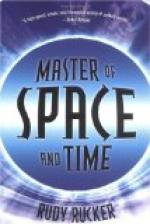You may wonder how one wireless operator gets into communication with another. He first listens in to determine whether messages are coming through the ether within range in the wave-length he is to use. Hearing nothing, he adjusts his sending apparatus to the desired wave-length and switches this in with the signal aerial which serves both his sending and his receiving set. This at the same time disconnects his receiving set. He sends out the call letters of the station to which he wishes to send a message, following them with his own call letters, as a signature to show who is calling. After repeating these signals several times he switches out his sending set and listens in with his receiving set. If he then gets an answer from the other station he can begin sending the message.
Marconi was not allowed to hold the wireless field unmolested. Many others set up wireless stations, some of them infringing upon Marconi’s patents. Others have devised wireless systems along more original lines. Particularly we should mention two American experimenters, Dr. de Forest and Professor Fessenden. Both have established wireless systems with no little promise. The system of Professor Fessenden is especially unique and original and may be destined to work a revolution in the methods of wireless telegraphy.
With an increase in the number of wireless stations and varieties of apparatus came a wide increase in the uses to which wireless telegraphy was applied. We have already noticed the press service from Poldhu. The British Government makes use of this same station to furnish daily news to its representatives in all parts of the world. The wireless is also used to transmit the time from the great observatories.
Some of the railroads in the United States have equipped their trails as well as their stations with wireless sets. It has proved its worth in communicating between stations, taking the place in time of need of either the telegraph or the telephone. In equipping the trains with sets a difficulty was met in arranging the aerials. It is, of course, impossible to arrange the wires at any height above the cars, since they would be swept away in passing under bridges. Even with very low aerials, however, communication has been successfully maintained at a distance of over a hundred miles. The speed of the fastest train affects the sending and receiving of messages not at all. It was also found that messages passed without hindrance, even though the train was passing through a tunnel.
Another interesting application of wireless telegraphy is to the needs of the fire-fighters. Fire stations in New York City have been equipped with wireless telegraph sets, and they have proved so useful in spreading alarms and transmitting news of fires that they seem destined to come into universal use.




